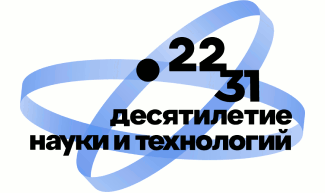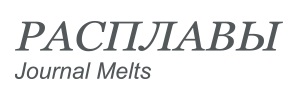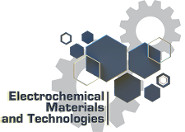
Two years ago, a new laboratory appeared at the Institute of High Temperature Electrochemistry – Medical Materials Science and Bioceramics, whose employees are studying the process of integrating materials synthesized by IHTE scientists into the tissues of the musculoskeletal system. The laboratory is headed by Mikhail V. Gilev, who recently defended his doctoral thesis “Augmentation of bone intraarticular defects in the surgical treatment of patients with impression fractures of limb bones.”
A graduate of the Ural State Medical University, he currently heads the Department of Operative Surgery and Topographic Anatomy of the Ural State Medical University and at the same time works as an orthopedic trauma surgeon at the 24th city hospital of Yekaterinburg, which is the clinical base of the Department of Traumatology and Orthopedics of the Ural State Medical University. Mikhail Gilev owes much of his knowledge and skills to the Ural Trauma School, which is represented by corresponding member S.M. Kutepov, doctors of medical sciences E.A. Volokitina, Yu.V. Antoniadi. The current surgeon and the head of the department, he devotes a lot of time to scientific work фе the Institute of High Energy Technology. We talked about this with Mikhail Vasilievich.
– What research do you conduct at the Institute of High Temperature Electrochemistry?
– We study the processes of integration of ceramic materials into bone and cartilage. On the one hand, it is necessary to examine the bone tissue itself, its mechanical properties, and on the other hand, to choose the parameters of the implant so that it is most suitable for its replacement.
– We study the processes of integration of ceramic materials into bone and cartilage. On the one hand, it is necessary to examine the bone tissue itself, its mechanical properties, and on the other hand, to choose the parameters of the implant so that it is most suitable for its replacement.
Of course, still the golden standard of implanthology is the own bone tissue of a man, which is taken from the ribs or bones of the pelvis. But these are additional manipulations that increase the time of the operation, and, of course, this is an extra trauma for the body. The materials used for implantation have very high requirements: they must have biological inertness, mechanical strength, designed for a long period of work in the body, resistant to high-temperature sterilization. From the point of view of biocompatibility with the body, materials belonging to the class of ceramics are most suitable for prosthetics, since they have high corrosion and erosion resistance, wear resistance and, of course, biological inertness.
Non-absorbable alumoceramics and zirconium ceramics are used to make parts of bone implants, in particular hip, knee and other joint endoprostheses. Each joint has its own biomechanics. Given its shape and pathology, tissue-specific ceramics are required, which are synthesized in the laboratory of Solid Oxide Fuel Cells, headed by the director of IHTE, Doctor of Chemical Sciences Maxim Vasilyevich Ananyev.
Both absorbable and non-absorbable ceramics are used as materials for implants replacing bone tissue. Absorbable ceramics are used to replace bone defects obtained during intraarticular fractures, after the removal of malignant and benign tumors, with any other defects in bone tissue. Traditionally, calcium phosphate and hydroxyapatite are used in these cases (this, by the way, is a natural component of vertebral bones). Calcium phosphate gradually dissolves in the body, being replaced by its own bone. This material has good properties, but they can be significantly improved. This is our goal. Calcium phosphate and other absorbable ceramics are synthesized in the laboratory of Electrochemical Materials Science of IHTE, which is headed by Anton Valerievich Kuzmin, PhD in Chemistry. Recently, a patent has been received for a new material – calcium phosphate doped with strontium. As studies have shown, it optimizes bone remodeling processes, improves bone fusion, and accelerates the healing of fractures.
– The staff of your laboratory is still a few people. Do you have a division of labor?
– Sure. Leading researcher, Doctor of Biological Sciences, Irina Petrovna Antropova studies the effect of blood cells – platelets on tissue regeneration processes. Leading researcher, Doctor of Physics and Mathematics, Dmitry Viktorovich Zaitsev explores the mechanical properties of solid biological tissues – bone and dental. Senior researcher, candidate of biological sciences, Julia Yaroslavovna Khrunyk, a specialist in molecular biology, is studying and optimizing the interaction of the implant with bone tissue at the level of genes and molecules.
– Sure. Leading researcher, Doctor of Biological Sciences, Irina Petrovna Antropova studies the effect of blood cells – platelets on tissue regeneration processes. Leading researcher, Doctor of Physics and Mathematics, Dmitry Viktorovich Zaitsev explores the mechanical properties of solid biological tissues – bone and dental. Senior researcher, candidate of biological sciences, Julia Yaroslavovna Khrunyk, a specialist in molecular biology, is studying and optimizing the interaction of the implant with bone tissue at the level of genes and molecules.
– What stage are your studies now?
– While the preclinical tests are conducting. We work with laboratory animals, analyze the data and offer scientists to change the composition and structure of the implant. We actively cooperate with colleagues from the Ural State Medical University and the Institute of Immunology and Physiology of the Ural Branch of the Russian Academy of Sciences. We are supported by the rector of Ural State Medical University, corresponding member of the Russian Academy of Sciences, professor Olga Petrovna Kovtun. And the corresponding member Boris Germanovich Yushkov, the great specialist in the field of tissue regeneration, is our research supervisor from the IIP UB RAS.
Of course, we are still only at the beginning of the journey. After all, as you know, from the time a drug is developed to a pharmacy, ten to fifteen years pass. But we try to work at a global level.
– While the preclinical tests are conducting. We work with laboratory animals, analyze the data and offer scientists to change the composition and structure of the implant. We actively cooperate with colleagues from the Ural State Medical University and the Institute of Immunology and Physiology of the Ural Branch of the Russian Academy of Sciences. We are supported by the rector of Ural State Medical University, corresponding member of the Russian Academy of Sciences, professor Olga Petrovna Kovtun. And the corresponding member Boris Germanovich Yushkov, the great specialist in the field of tissue regeneration, is our research supervisor from the IIP UB RAS.
Of course, we are still only at the beginning of the journey. After all, as you know, from the time a drug is developed to a pharmacy, ten to fifteen years pass. But we try to work at a global level.
Written by E. Ponizovkina
http://www.uran.ru/node/5942
Year: 2020
Month: march
Issue Number: 5
Absolute number: 1209
Year: 2020
Month: march
Issue Number: 5
Absolute number: 1209




